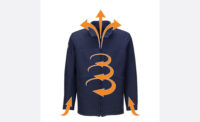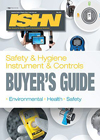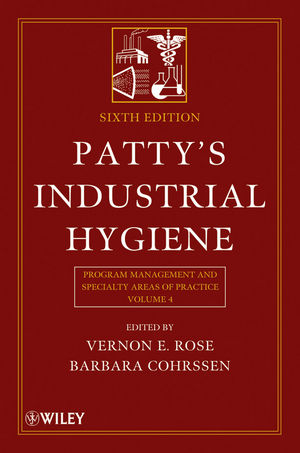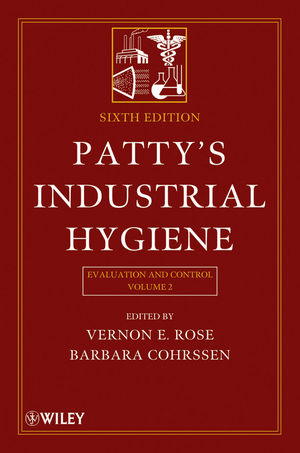When facility decision-makers think of industrial safety barriers, they often conjure up images of the traditional steel guardrails that have been around for decades. However, the safety barriers and gates that protect today’s pedestrians and machinery have evolved to the point where they are able to address a host of plant safety issues — and to meet the need for more flexible and affordable options covering a wide range of applications.
Here are 12 tips to help you update your image of industrial safety barriers — and to help you decide how, when and where to use these essential safety devices.
1 — Do the homework. Safety barriers do more than separate forklift and pedestrian traffic. They protect pedestrians from falling off interior raised platforms and mezzanines, keep forklifts from crashing through closed doors, and prevent employees or visitors from entering restricted areas and becoming seriously injured by machinery. The devices also guard against damage to your facility, machinery and products. Do the homework on safety barriers and gates — and consider all the ways they improve safety in a wide range of areas.
2 — Assess the traffic. Before deciding on any safety barrier, thoroughly map the paths forklifts and pallet jacks follow through your operation. Pay particularly close attention to areas where these vehicles encounter pedestrians and work areas. Record the amount of vehicle traffic involved, lift-truck speeds, traffic patterns, and the types of loads carried. Also consider the different types of forklifts, pallet jacks, and other vehicles in use as you make your decisions for installing safety barriers. Painted yellow lines on the floor offer little protection — consider replacing them with barriers.
3 — Factor in forklift operator driver habits. According to OSHA, nearly 100 workers are killed and 20,000 seriously injured in forklift-related incidents each year. Address any concerns about the lack of forklift operator training by checking the company’s forklift safety record and by observing lift truck driver habits. Doing this will help you determine the type of barriers needed and where to place them and will drive a host of other key decisions related to barriers and gates.
4 — Don’t get lulled into a false sense of security. Dock drop-off is one of the most potentially devastating industrial accidents, yet some companies rely on a single chain across a dock door to meet OSHA Regulation 1910.23 regarding “protection for wall openings and holes.” Don’t be fooled — chains are not an effective visual or physical barrier for material-handling equipment or personnel. A better practice is to use safety barriers and gates instead of chains, thus providing a much higher level of protection.
5 — Determine the stopping power needed. Some barriers and gates are only meant to provide a substantial visual and physical barrier that guards against incidental materials-handling equipment impacts. Heavy-duty barriers and gates, on the other hand, can stop a 10,000-lb. forklift traveling up to four mph. Know the differences and determine what is needed for your operation.
6 — Leverage the power of visuals. Stopping power is critical, but the importance of an industrial safety barrier’s role as a visual barrier cannot be overstated. The stronger the visual message, the better, especially since the ultimate goal is to avoid a lift truck of any kind coming into contact with people, whether a barrier is in place or not. Equally important are visual messages that warn people to keep out of areas where their safety is at risk. Leverage the power of strong visuals with barriers and gates that communicate a clear message.
7 — Always think access. On the surface, a traditional steel guardrail or immovable barrier might seem adequate in many situations. The choice might be appropriate for some circumstances, but not if the barrier blocks a high-access area. Always think about the need to get in and out of the area where the devices are being used. Newer safety barriers and gates are specifically designed to provide the appropriate level of protection while also ensuring full access.
8 — Make it easy. When it comes to virtually any safety device, ease of use is key. This is an especially important factor when deciding on safety barriers and gates that offer both protection and access. With some fabric barriers, for example, one person can remove and reposition the barrier in less than ten seconds. Likewise, some automated safety gates open and close at the push of a button. At the loading dock, some barriers can be interlocked with other equipment, such as doors and vehicle restraints so that related components function as a single cohesive safety system.
9 — Plan for the long haul. Once a barrier or gate is installed, the general idea is to keep it there for a long time to come. Yet the needs of the operation and the flow of materials throughout the facility will likely change in the years ahead. Prepare for the future by choosing highly configurable barriers and gates that are easy to install and relocate. This practice also pays off when it’s time to change out damaged devices. The ability to quickly and easily adapt to almost any situation is essentially a given with the latest barrier and gate designs.
10 — Provide extra protection where needed. A forklift traveling with its forks in the down position poses a safety risk at floor level. The forks can also cause damage to walls, racking, and production equipment. Consider installing floor-mounted barriers to achieve an extra level of protection. The barrier can be used as a stand-alone unit or incorporated into a light- or heavy-duty barrier system.
11 — Invest wisely. Avoid thinking that a safety barrier is only a safety barrier, especially if the goal is to use the budget wisely. This is especially true of traditional steel guardrails. These conventional barriers are not always the best solution for every application since they sometimes provide more protection than needed for the cost. Given the wide range of choices, it pays to look at every option as part of the overall safety plan and decide which provides the best bang for the buck.
12 — Tap the experts. While many issues addressed by safety barriers and gates are universal, choosing the right barrier and/or the right combination of barriers and gates is not always a straightforward decision. There’s no substitute for tapping the expertise of a knowledgeable equipment manufacturer’s representative to assist with the selection of safety barriers and gates that contribute to a safe and productive work environment.
Andy Olsonis marketing manager, Rite-Hite Barrier Systems, Rite-Hite Corporation.
Today's industrial safety barriers




